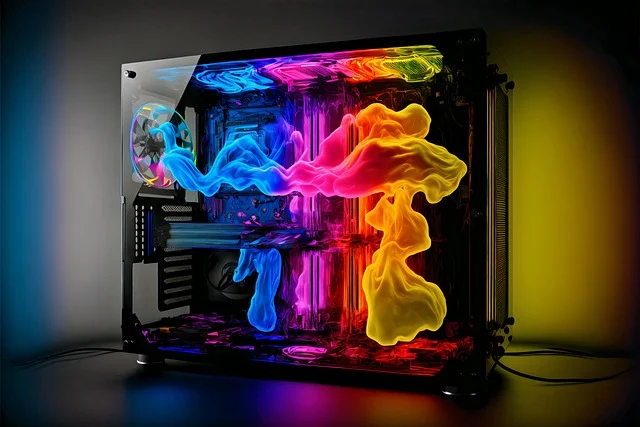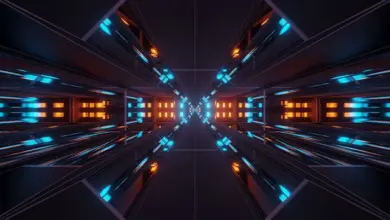
Building a custom PC can be an incredibly rewarding experience, offering the opportunity to create a machine tailored to your specific needs, whether for gaming, professional work, or everyday use. While the process may seem daunting to beginners, with a little patience and the right guidance, anyone can successfully assemble a powerful custom PC. This guide will walk you through each step in detail, from selecting components to putting everything together. Let’s dive into the intricacies of building your own computer.
1. Why Build a Custom PC?
Before getting into the technical details, it’s important to understand why building your own PC is advantageous over buying a pre-built one.
- Customization: You get to choose every component, ensuring that your PC performs exactly how you want it to.
- Cost Efficiency: Pre-built PCs often come with unnecessary features, driving up the cost. By building your own, you only pay for the features you need.
- Upgrade Potential: Custom-built PCs are easier to upgrade, giving you the flexibility to improve your machine over time without having to buy an entirely new system.
- Learning Experience: Building a PC is a hands-on experience that helps you understand how each part of a computer works, and it can also save you money on repairs in the future.
2. Key Components of a Custom PC
The first step in building a custom PC is selecting the right components. Here’s an overview of the essential parts:
a. Central Processing Unit (CPU)
The CPU is often referred to as the brain of the computer. It handles all the basic tasks and determines the overall performance of your PC. Two major manufacturers dominate the CPU market: Intel and AMD.
- Intel processors are known for high single-core performance, making them ideal for gaming.
- AMD processors, particularly the Ryzen series, offer strong multi-core performance, making them excellent for multitasking and professional workloads like video editing.
When selecting a CPU, consider what tasks you’ll be using your PC for. Gaming PCs can prioritize higher clock speeds, while workstations benefit from more cores and threads.
b. Motherboard
The motherboard is the main circuit board that connects all the components. It dictates what kind of CPU, RAM, and other peripherals your system can use. When selecting a motherboard, ensure that it’s compatible with your chosen CPU and has enough PCIe slots, SATA ports, and USB headers for your needs.
Popular form factors for motherboards include:
- ATX: The most common size, offering plenty of room for multiple components.
- Micro-ATX: Smaller than ATX, ideal for more compact builds but with fewer expansion slots.
- Mini-ITX: A compact size for smaller builds, but it limits your options in terms of upgrades.
c. Random Access Memory (RAM)
RAM is the temporary memory that your PC uses to store data that is actively being used. The more RAM your system has, the better it can handle multiple applications running simultaneously. For most users, 16GB of RAM is the sweet spot, though 32GB or more is advisable for heavy multitasking, gaming, or content creation.
RAM speed is also important, especially for gaming. Look for DDR4 or DDR5 modules with high clock speeds (measured in MHz), which will ensure faster performance.
d. Graphics Processing Unit (GPU)
The GPU, or graphics card, is essential for gaming, 3D rendering, and video editing. Like the CPU, the two major manufacturers are NVIDIA and AMD.
- NVIDIA cards, such as those from the GeForce RTX series, are known for their performance and advanced features like ray tracing.
- AMD cards from the Radeon series offer competitive performance at a lower price point.
For gamers, the GPU is one of the most important components, and it’s worth investing in a good one if you plan on running demanding titles.
e. Storage: SSD vs. HDD
Storage is where all your data—applications, files, and games—resides. There are two main types of storage devices: Hard Disk Drives (HDDs) and Solid State Drives (SSDs).
- SSDs are much faster than HDDs, leading to faster boot times and quicker file access. NVMe SSDs are even faster than traditional SATA SSDs.
- HDDs offer more storage at a lower price, making them ideal for storing large files like media libraries.
Most custom PC builders use an SSD for their operating system and frequently used applications, and an HDD for mass storage.
f. Power Supply Unit (PSU)
The PSU powers your entire system, so it’s important to choose one that provides enough wattage for all your components. Look for 80 Plus certified PSUs, which are more energy-efficient and reliable. Make sure to calculate your system’s total power consumption and select a PSU with a bit of overhead, ideally around 600W to 850W for most mid-range builds.
g. Case
The case houses all your components, and while it may seem purely aesthetic, it’s essential to choose one with good airflow to prevent overheating. Ensure that your case is compatible with your motherboard size and has enough room for your GPU, fans, and storage drives. You’ll also want to consider cable management features and expansion options for future upgrades.
h. Cooling
Keeping your components cool is vital for maintaining performance and extending the life of your system. Most CPUs come with a stock cooler, but for overclocking or better thermal management, you might want to invest in an aftermarket air cooler or liquid cooling system. Case fans are also essential for good airflow.
3. Building Your Custom PC
Once you’ve selected all your components, it’s time to assemble your PC. Follow these steps to ensure a smooth build process:
a. Prepare Your Workspace
Find a clean, well-lit workspace with plenty of room to lay out all your components. You’ll also need a screwdriver and an anti-static wrist strap to protect your components from electrostatic discharge.
b. Install the CPU
Start by placing the CPU into the motherboard’s CPU socket. Be sure to align the notches on the CPU with those on the socket. Once it’s in place, secure it with the retention arm. Apply thermal paste (if not pre-applied) on the CPU before attaching the cooler.
c. Install RAM and Storage
Next, install the RAM sticks into the motherboard’s RAM slots. Push down firmly until you hear a click, indicating they are securely in place.
For storage, if you’re using an M.2 SSD, install it directly onto the motherboard in the designated slot. Otherwise, install your SATA SSD or HDD in the drive bays and connect them to the motherboard with SATA cables.
d. Mount the Motherboard in the Case
Place the motherboard into the case, aligning the screw holes with the standoffs in the case. Secure it with screws, but be careful not to overtighten them.
e. Install the GPU
Insert the GPU into the PCIe slot on the motherboard. Ensure it’s properly seated and secure it to the case with screws. Connect the necessary power cables from the PSU to the GPU.
f. Connect the PSU and Cables
Install the PSU in the designated area of the case. Then, connect all the necessary power cables to the motherboard, GPU, storage devices, and fans. Use cable ties or the case’s cable management features to keep everything neat and organized.
g. Install Cooling Fans
If you’re adding extra case fans or using an aftermarket cooler, install these now. Ensure the fans are oriented correctly for optimal airflow (typically intake fans at the front/bottom and exhaust fans at the back/top).
h. Power On and Install the Operating System
Once all the components are in place and everything is connected, it’s time for the moment of truth—powering on the PC. Plug the PC into an outlet, connect a monitor, keyboard, and mouse, and press the power button.
If everything turns on correctly, you’ll see the BIOS screen. From here, you can install your operating system (typically Windows or Linux) via a USB drive or optical disc.
4. Post-Build Checklist
After building your PC, here are a few things you should do to ensure everything runs smoothly:
- Install All Drivers: Once the OS is installed, download and install drivers for your motherboard, GPU, and any other peripherals.
- Run Stress Tests: Use software like Prime95 or FurMark to stress-test your CPU and GPU, ensuring that the components are stable and properly cooled.
- Monitor Temperatures: Keep an eye on your system temperatures, especially if you’re overclocking. Software like HWMonitor or MSI Afterburner can help with this.
5. Upgrading and Maintaining Your Custom PC
One of the greatest advantages of a custom-built PC is its upgradability. Over time, as your needs change, you can easily replace or add components. Regular maintenance, like cleaning out dust and ensuring good airflow, will also keep your PC running smoothly for years.




